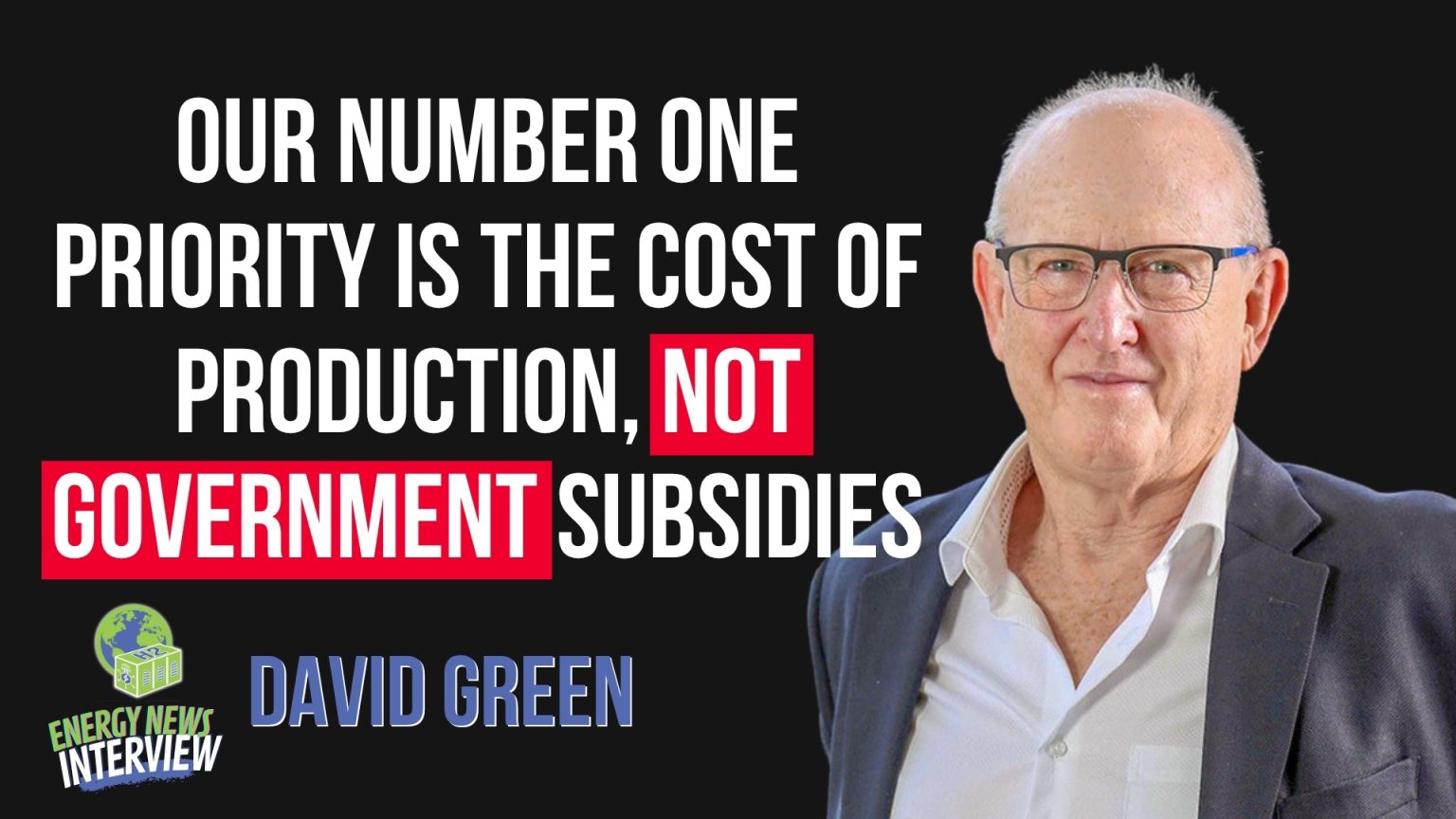With the EU projecting a 40% shortfall in water availability for human use by 2030, access to water is becoming a defining constraint for the future of green hydrogen. In Australia, an innovative hydrogen development strategy is attempting to solve this challenge in a way that could reshape cost and infrastructure assumptions for the sector.
WATCH THE FULL INTERVIEW HERE
David Green, co-founder of the Climate Impact Corporation, is leading a development approach centered on two 10-gigawatt hydrogen projects in Australia’s remote interior. These projects aim to produce hydrogen entirely off-grid, using atmospheric water generators to source water in some of the country’s driest regions. While the technology itself isn’t new—industrial use dates back decades—its proposed application at this scale is rare and potentially influential.
Rather than relying on coastal desalination or national grid infrastructure, which often come with high capital costs and environmental trade-offs, Green’s team is prioritizing a modular strategy. The projects are designed as a series of standardized units that can be rapidly deployed and easily adapted to future technology improvements. This includes the option to switch to newer electrolyzer types once they become bankable and proven in the market.
Central to the project is a disciplined focus on economics. Green and his team emphasize that their main metric is cost of production, not reliance on subsidies. Electricity accounts for the majority of the costs associated with green hydrogen production, and by designing off-grid systems integrated with renewables, the project aims to drive significant reductions in operating expenses. Collaborations with partners like GE Vernova and Jinko Solar are aimed at improving system efficiency and lowering the overall cost per kilogram of hydrogen.
This contrasts with previous large-scale Australian hydrogen ventures that struggled with water sourcing and grid dependence. Several were ultimately canceled or suspended, highlighting the need for new strategies. Rather than seeing these setbacks as deterrents, Green’s team sees them as data points that help refine more resilient designs. In their model, the hydrogen and ammonia production facilities are co-located, minimizing the need for intermediate storage and complex transport infrastructure.
What also sets this approach apart is its readiness to work within evolving carbon markets. Green believes that credible carbon pricing—whether through contracts for difference, carbon taxes, or market-based trading—will be a major enabler of competitiveness for green hydrogen. The team is targeting $2/kg through long-term take-or-pay agreements and is already in advanced negotiations to support that pricing.
In terms of logistics, the projects are positioned on national freight corridors, giving flexibility for rail-based transport to domestic ports like Adelaide and Darwin. The developers are also participating in initiatives such as the VTTI open market process for storage and cracking infrastructure in Europe. This positions them to serve export markets efficiently and in alignment with future regulatory frameworks.
Net-zero shipping is part of the project’s broader sustainability vision. Green’s supply chain strategy involves selecting partners committed to renewable fuels and energy sources, down to the vessels transporting the product. Carbon offsets are not just a compliance mechanism but are seen as a pricing tool to improve affordability for customers who require low-carbon fuels.
While initial timelines have seen a modest delay of around six months, mainly due to technology assessments and OEM negotiations, the overall structure appears to support scalable, accelerated deployment in the medium term. The team is preparing a pilot project in the U.S. and is engaged in early-stage work in Oman and the UAE.
As the hydrogen market continues to evolve, this project reflects a trend toward adaptable, cost-sensitive design. By anchoring development in modularity, strong technical partnerships, and a commercial pricing discipline, Green’s team is working to demonstrate that producing hydrogen at scale need not depend on public subsidies or legacy infrastructure. The coming years will show whether this approach can become a reference model for other regions facing similar challenges.





